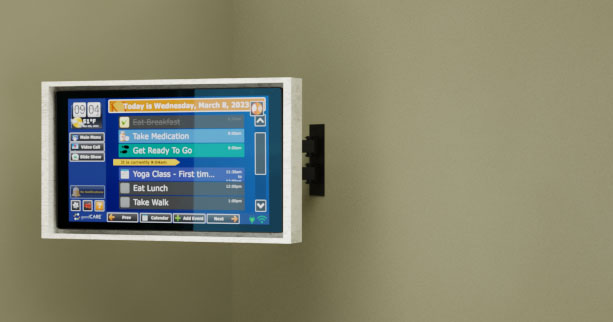GrandCare featured on CBS Early Show
http://www.cbsnews.com/stories/2010/08/05/earlyshow/leisure/gamesgadgetsgizmos/main6745504.shtml
(CBS) It’s a role reversal that many Americans go through — adult children taking care of their elderly parents.
And new technologies are helping to take the burden off the kids — and helping parents remain independent.
Jean Burkhart, 80, enjoyed living independently. Five years ago, however, she suffered a seizure while alone in her Florida home. More than four critical hours passed before her daughter discovered what happened.
Carol Roberts, Burkhart’s daughter, said, “I called to wish her a happy Mother’s Day and found her confused.”
In an instant, managed care became a necessity for Jean, but like a growing number of older Americans, she wasn’t ready for a nursing home.
Burkhart said, “I wanted to age in my home and not go to a long term care facility or a personal care facility.”
Burkhart and Roberts looked into alternatives and found the GrandCare System. It’s a high-tech set of sensors installed throughout the home that monitors and sends reports about Jean’s movements to family members down the street — or halfway around the globe for as little as $50 a week. It provides a realistic alternative to nursing home care, where the average price tag is more than $50,000 per year.
Edward Schneider, dean emeritus at the Leonard Davis School of Gerontology at the University of Southern California, told CBS News, “Most people want to live in their own homes and technology can enable people to do this. Using technology they can stay where they want to stay.”
While GrandCare allows Burkhart to live on her own and gives Roberts peace of mind, there are other benefits for the entire family.
Burkhart said, “It’s sort of comforting to know that they can check on me. I’m really comfortable. I don’t mind the sensors.”
Roberts said, “I’m not ready to have mom live with me, and I don’t think she’s really ready to have me live with her.”
Sensors systems — like the one that Burkhart uses — are just one part of the many new technologies available to aging parents. Here are a few more recommended by Alexis Abramson, a lifestyle gerontologist, on “The Early Show”:
….Read more here:
href=”http://www.cbsnews.com/stories/2010/08/05/earlyshow/leisure/gamesgadgetsgizmos/main6745504.shtml”>http://www.cbsnews.com/stories/2010/08/05/earlyshow/leisure/gamesgadgetsgizmos/main6745504.shtml



